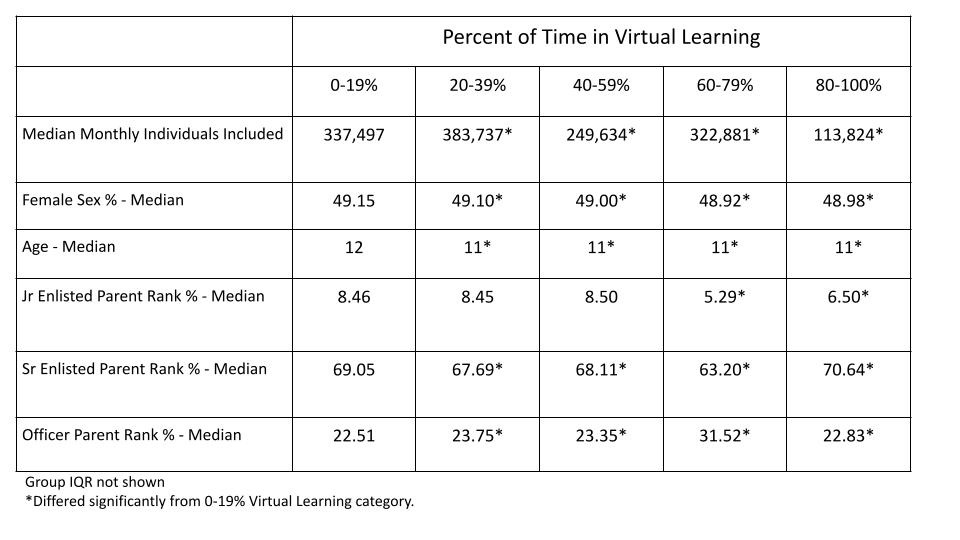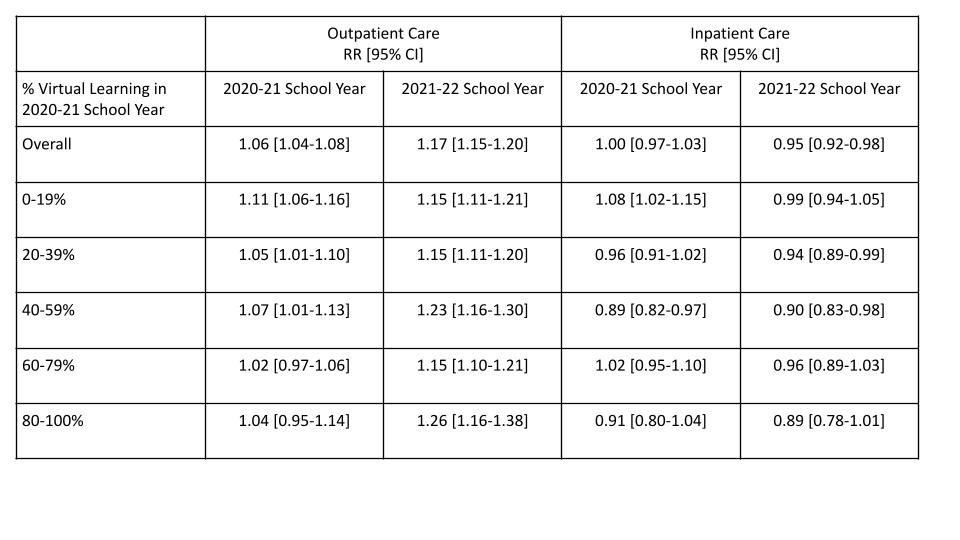Mental Health
Mental Health 3
709 - Effects of COVID era Virtual Learning on Children and Youth’s Suicidal Behaviors
Sunday, April 30, 2023
3:30 PM - 6:00 PM ET
Poster Number: 709
Publication Number: 709.328
Publication Number: 709.328
ELIZABETH HISLE-GORMAN, Uniformed Services University, Bethesda, MD, United States; Madeline Dorr, Uniformed Services University of the Health Sciences F. Edward Hebert School of Medicine, Gaithersburg, MD, United States; Apryl Susi, Henry M. Jackson Foundation at USUHS, GWU, Bethesda, MD, United States; Elizabeth H. Lee, Uniformed Services University of the Health Sciences F. Edward Hebert School of Medicine, Annandale, VA, United States; Binny Chokshi, Uniformed Services University of the Health Sciences F. Edward Hebert School of Medicine, Washington, DC, United States; Cade M. Nylund, Uniformed Services University of the Health Sciences F. Edward Hebert School of Medicine, Bethesda, MD, United States

Elizabeth Hisle-Gorman, MSW, PhD (she/her/hers)
Associate Professor
Uniformed Services University
Bethesda, Maryland, United States
Presenting Author(s)
Background: Suicidal related behaviors have reportedly increased during the COVID-19 pandemic. One hypothesis for increased youth suicide risk relates to isolation associated with virtual learning (VL), however this theory is largely untested.
Objective: To explore the relationship between percent of time in VL and near- and longer-term care for suicidal behaviors in children and youth.
Design/Methods: A retrospective monthly cross-sectional study using military health system data compared rates of care for suicidal behaviors in the 2020-21 (widespread virtual learning) and 2021-22 (return to in-person) school years to 2018-19 (last full pre-pandemic school year). States were grouped by % VL (0-19, 20-39, 40-59, 60-79 and 80-100%) using Burbio school tracking data, and children were categorized by 2020-21 state of residence. In- and outpatient diagnoses of suicidal behaviors (ideation, attempt and self-harm) were identified by ICD-10 code. Pre-pandemic (2018-19) care rates different by state VL level, which necessitated stratified analysis (Figure 1). Wilcoxon Rank sum test compared group demographics. Poisson regression analyses determined rates of in- and outpatient suicidal behavior care by school year.
Results: A median of 1.4M children aged 5-18 were included. VL quintiles were similar on most demographics (Table 1). In the full population of children, outpatient suicidal behavior care increased 6% in 2020-21 school year, ranging from no significant change in states with 60-79% VL to an 11% increase in states with 0-19% VL; inpatient suicidal care was largely unchanged (Table 2). In the 2021-2022 school year, overall outpatient suicidal behavior care increased 17% as compared to 2018-19, ranging from 15% in states with 0-39% and 60-79% VL, to 27% in states with 80-100% VL; inpatient care was largely unchanged but did decrease overall in states with 20-59% VL (Table 2).
Conclusion(s): Results indicate modest increases in care for suicidal behaviors in 2020-21 when schools experienced the most virtual learning, and larger increases of 15-27% in 2021-22 when schools reopened nationally. Possible reasons related to outpatient increases in 2021-22 include delayed detection of risk, cumulative effects of stress, or risk surrounding returning to a school environment. Largely unchanged rates of inpatient suicide care may suggest VL is not associated with care requiring hospitalization.
.jpg)


